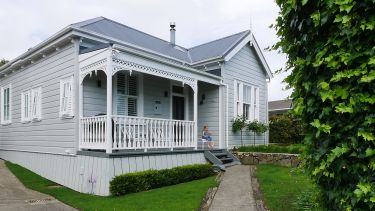
How Much Does it Cost to Renovate?
It’s the big question every homeowner asks — and the perfect place to start your renovation journey.
At Alpha 1 Builders, we believe planning your dream renovation should feel exciting, not overwhelming. That’s why we’ve put together this guide to help you take the first real step: understanding how to shape your budget so it works for you.
Every renovation is unique — just like every home and family. Costs will depend on your goals, your design, and the level of craftsmanship you want to achieve. What matters most is finding the sweet spot where your budget meets your vision — so you can create a home that feels just as good as it looks.
"In our experience, the safest way to start is by deciding what you’re comfortable spending first — then shaping the design around that"
We know renovations are exciting (and it’s easy to get carried away in the whirlwind of ideas ✨). But without a clear budget in place before design begins, there’s no guarantee the plans you fall in love with will actually fit your finances.
By setting a firm budget up front, your builder and architect know exactly what they’re working with — helping them design something beautiful and achievable. And if you’re approaching the bank for funding, it pays to have that conversation early so everyone is on the same page.
At the end of the day, your budget will directly shape the design you hold in your hands — and the home you’ll be able to bring to life.
Definitely consider these main points below...
- The size of the renovation, because in this situation, size does matter.
- The complexity and materials used for the structure - steel or timber? This impacts costs.
- Manpower: the hours of labour & project management required to complete the project.
- Council requirements for things like stormwater and drainage, plus zoning considerations.
- The big-ticket items and their materials: cladding, foundations, roofing and flooring.
There are so many choices to make during the design stage — and each one can have a big impact on the cost of your renovation. That’s why we offer architectural partnerships: so design and renovation come together as one cohesive, supportive team.
This way, every decision is made with your vision, budget, and craftsmanship in mind — keeping the process exciting, not overwhelming.
As lucky as we are to help bring so many renovation dreams from concept to reality, it’s heartbreaking to know how many projects never make it past the drawing board. Too often, it’s because the plans were created from a “this is what we want” wish list — without a clear budget to guide them.
The truth is, everyone has a number they feel comfortable spending on their renovation. That figure is deeply personal, shaped by your “why” and your own circumstances — and it will be different for every family.
Here are some of the key factors we encourage our clients to think about when setting a budget, to make sure their dream renovation has the best chance of becoming a reality:
- The current value of the property.
- How much they can comfortably borrow and service.
- How much money have they saved and is available?
- Whether the improvements will add value - and if so, how much?
- The possibility of future-proofing the investment with a rental return.
- Creating more space for a blended family and joining incomes.
- Proximity to learning facilities and amenities, and the possibility of taking on boarders.
Once you’ve taken everything into account, it’s important to have a clear budget in mind before you approach your builder, architect, or draftsman.
Your builder can usually give you ballpark pricing once your plans are council-ready. From there, you’ll receive more detailed numbers — whether that’s a fixed-price contract or a charge-up arrangement.
Either way, we always recommend allowing for a contingency budget. It’s the best way to keep your renovation journey smooth, stress-free, and ready for any little surprises along the way.
What's that for and why would I need it, you may ask? The contingency budget is a safety net to cover things such as:
- Any variations to your plans. It's pretty common for clients to change their minds once the renovation starts.
- Unexpected findings (common in older homes) such as hidden rot in joists or timber structure.
- Shoddy D.I.Y that has taken place by previous owners and hidden away.
- Volcanic rock breaking, very common in Central Auckland with such close proximity to Mt Eden, Mt Albert etc.
- Walls and floors that aren't level, straight or square.
- Sub-floor joists needing repair or replacement.
- Outdated and inadequate drainage and stormwater.
We don’t share this to scare you — but to prepare you.
Renovations, especially with bungalows and villas, can sometimes reveal the unexpected. That’s why we put together our Bungalow and Villa Renovations Guide — to help you understand what might pop up along the way.
To keep your project stress-free, we recommend setting aside a contingency fund of at least 15%. This little buffer means you won’t have to delay or scale back your plans if surprises arise. And the best part? If it goes unused, you’ve got extra money at the end — perfect for reducing your lending or finally splurging on that gorgeous sofa you’ve been eyeing.

